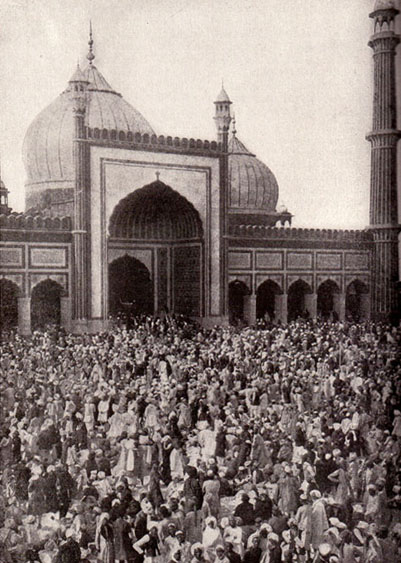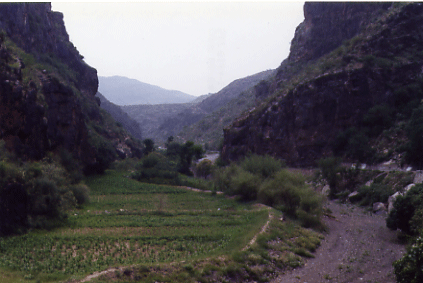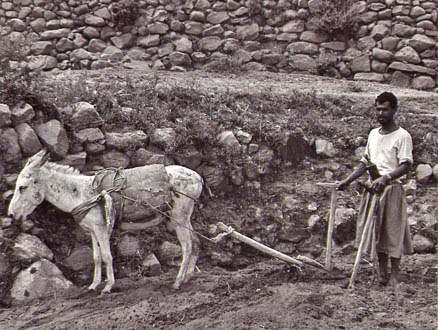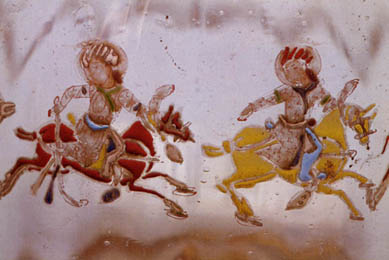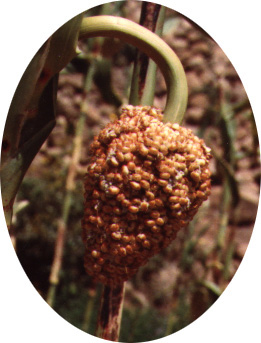
highland sorghum
[In 2003 I attended a conference in Rome and gave a paper which was eventually published in Convegno Storia e Cultura dello Yemen in età Islamica, con particolare riferimento al periodo Rasûlide (Roma 30-31 ottobre 2003 (Accademia Nazionale dei Lincei, Fondazione Leone Caetani, 27, pp. 161-174, 2006). As this publication is virtually inaccessible, I am reprinting the paper here (with page numbers to the original indicted in brackets). For the previous part of this article, click here. The references are provided at the end of the first entry.]
IDENTIFYING THE MAJOR CROPS
Although al-Ashraf claims to have learned from the farmers themselves, his overall classification of crops and plants suggests that he is fitting that knowledge into a shared textual tradition of scientific agronomy at the time. Al-Ashraf inventories Yemeni production according to five main categories: zurū‘, qaá¹ÄnÄ« or ḥubÅ«b, al-ashjÄr al-muthmira, rayÄḥīn, and khaá¸rÄwÄt and buqÅ«lÄt. By zurū‘ (the plural of zar‘) al-Ashraf means the cereal crops of wheat, barley, sorghum, rice, two kinds of millet, eleusine (or finger millet) and teff, as well as sesame, cotton, lucerne, madder and turmeric. This goes beyond the English sense of cereal grains to cover the non-food crops of cotton and madder, both of which are reclassified as al-ashjÄr al-muthmira (flowering trees) in the later Bughyat. In classical Arabic terms, at least according to AbÅ« ḤanÄ«fa, sesame is classified as qaá¹ÄnÄ«. (12)
The second major kind of crop is labeled qaá¹ÄnÄ«, which the author glosses as ḥubÅ«b. This includes what we would today call pulses and various kinds of beans, such as chick peas, lentils, cowpeas, fava beans, endive, fenugreek, water cress, mustard, safflower, poppy, flax and black cumin. The term qaá¹ÄnÄ«, according to AbÅ« ḤanÄ«fa, is originally Syrian and refers to crops such [p. 167] as rice, chickpeas, lentils, sesame and most beans. (13) The term ḥubÅ«b (plural of ḥabb) may refer to wheat, barley and the like, but has also been widely used in the agricultural texts for seed plants of various kinds. (14)
The third category, al-ashjÄr al-muthmira, literally refers to flowering trees and plants. (15) In order of presentation, al-Ashraf includes here dates, grapes, figs, pomegranates, apples, plums, pears, peaches, apricots, mulberry trees, olives, walnuts, almonds, pistachios, betel nuts, carob, bananas, sugar cane, citrons, oranges, lemons, lebbek, christ’s thorn and Indian laburnum. The reference to olives is clearly textual, since this tree was not planted in Yemen; nor do I think betel would have been tried outside the royal gardens. The fourth category comprises rayÄḥīn or aromatic plants and ornamental flowers. Of the nineteen specific plants mentioned, most are flowers (such as rose and jasmine), but the list also includes useful herbs such as basil, chamomile and the important dye of henna.
The final part of al-Ashraf’s classification refers to khaá¸rÄwÄt and buqÅ«lÄt. This covers a variety of green and root vegetables such as lettuce, cucumbers, eggplant, carrots, cabbage, garlic, onions, radish, endive, mallow, colocasia, chard, spinach, purselane, celery, okra and asparagus. Among the ground “fruits†included here are melons and gourds, although grapes are considered flowering trees. Also included are several spices, such as ginger, mint, parsley, coriander, dill and cumin, as well as “medicants,†such as balsam, rue, fennel and Indian hemp.
FOOTNOTES:
(12) Ibn Sīda, al-Mukhaṣṣaṣ, Beirut, 1965, v. 11, p. 62.
(13) Ibid, v. 11, p. 62. In KitÄb al-FilÄḥa al-RÅ«miya (Leiden, Or. 414, f. 40) qaá¹ÄnÄ« is defined as summer crops like rice which need the heat and water.
(14) Ibn Sīda, al-Mukhaṣṣaṣ, cit., v. 11, p. 49. For example, Ibn Waḥshiya, v. 1, p. 492 includes fava bean in the category of ḥubūb used for food.
(15) This term is used by Ibn Waḥshiya, v. 1, p. 367.
to be continued
